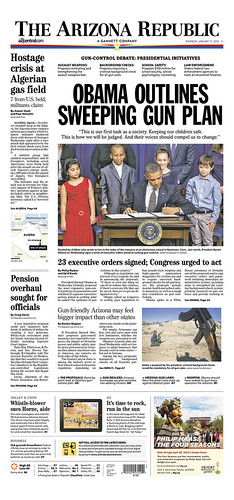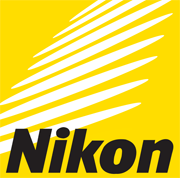This is the brief story of a humble and versatile room belonging to the U.S. Government that, every once in a while, becomes the focus of millions of eyeballs from coast-to-coast. It’s called the South Court Auditorium.
During my White House years, when we needed a utility player to host a presidential event, we looked to OEOB 450, located on the North end of the fourth floor of the Eisenhower Executive Office Building — then called the Old Executive Office Building, or OEOB — within the 18 acres of the White House Complex.
After a renovation of the Eisenhower Executive Office Building, the President’s communications staff these days turn to South Court Auditorium. Same basic layout as the old OEOB 450, but ground floor instead of fourth floor, easing the strain on the elevators. It’s the utility infielder of White House venues. And like utility men, occasionally, it hits home runs.
* * *
Every week in Washington has an element of theater and stagecraft, one side or another working to take full advantage of visual storytelling. This week, from the NRA ad to the President’s Executive Order signing, there were more production elements than most. The production of political storytelling is what I call PoliOptics — a mashup of politics and optics.
Presidents can fly on Air Force One across the country – or even around the world – for a photo worthy to print on the top of the fold of U.S. newspapers.
Every modern president does it. On September 18, 1996, President Clinton traveled to the Grand Canyon to sign a proclamation creating the Grand Staircase Escalante National Monument. He said at the time, “We are saying very simply, our parents and grandparents saved the Grand Canyon for us; today, we will save the Grand Escalante Canyons and the Kaiparowits Plateaus of Utah for our children.” Almost exactly nine years later, on September 15, 1995, President George W. Bush traveled to Jackson Square in New Orleans to declare, after Katrina, that “throughout the area hit by the hurricane, we will do what it takes, we will stay as long as it takes to help citizens rebuild their communities and their lives.”
Two long trips for what were, essentially, compelling visual compositions for presidential message-giving.
By contrast, this week’s main polioptic event was a presidential home game. South Court Auditorium was the venue. In many ways, it had to be. Addressing gun violence is such a divisive issue that the very act of assembling the presidential travel juggernaut to go anywhere to sign the 23-measure Executive Order would itself become a politicized distraction. So the auditorium it was, a presidential trip of a few hundred feet.
Even this modest presidential movement from the Oval Office managed to dominate the image consciousness of American readers and viewers. We’re talking, of course, about President Obama’s 25 minute, 50 second event to roll out new measures to prevent gun violence.
[youtube]DLUNgRAbR7w[/youtube]
There was a time when Presidents, presidential candidates or other high government officials welcomed moments in which they might be photographed with gun in hand. There was Teddy Roosevelt, of course, and even Bill Clinton and John Kerry were seen in the midst of hunting outings. For a broader compendium, click here. It may be a while before we see the likes of those shots again.
To take absolutely nothing away from the seriousness of the message that President Obama and Vice President Biden sent on gun violence this week it’s worth noting, for my small niche audience of communications practitioners, how the visual elements of their announcement were engineered to turbo-charge the event’s coverage.
I’m conscious that some cried foul about the tactics, using children as a backdrop and all that. But, like it or not, ever since the days of Ronald Reagan and Mike Deaver, “people in the shot” is a time-honored way in which the image game is played in Washington, by both sides, nearly every day of the week.
Let’s take a quick tour around the country to take a peek at what average, newspaper-subscribing Americans saw Thursday morning as their hometown broadsheets flew onto their driveways, unfurled from their plastic sheeting or rubber bands, to show their president in action.
Here’s the Montgomery Advertiser of Montgomery Alabama.

And here’s the Anchorage Daily News.

And, for good measure, the Arizona Republic.
 Sample front page images from three geographic sections of the country – the South, the Pacific Northwest and the Southwest – and we’re not even through the A’s. Trust me, I scanned hundreds of front pages on Thursday, and the South Court Auditorium event was prominent from Atlantic to Pacific, from the Canadian Border to the Rio Grande.
Sample front page images from three geographic sections of the country – the South, the Pacific Northwest and the Southwest – and we’re not even through the A’s. Trust me, I scanned hundreds of front pages on Thursday, and the South Court Auditorium event was prominent from Atlantic to Pacific, from the Canadian Border to the Rio Grande.
And beyond newspapers, there’s the visual impression left on blogs, through Twitter, and even the edited package that the networks and cable channels assembled for their Wednesday evening broadcasts. By the the time most Americans finished breakfast on Thursday morning, their consciousness was high that President Obama was goading them into action. They were being hit from all sides by an image.
So, how did the mechanics of event production, and the auditorium itself, contribute to the wall-to-wall coverage?
On most days, South Court Auditorium is a generic, stadium-style meeting room with four or five rows of seats; space in the back of the room for cameras sitting on tripods; a small buffer area in front of the stage for still photographers to capture the key moment; and handy backstage doors for easy ingress and egress by the principals – in this case, President Obama and Vice President Biden.
This was four-seal event. There was the Presidential Seal on the Blue Goose podium. There was the Presidential Seal on the signing table for the Executive Order. There was the Presidential Seal on the Presidential flag that made up the backdrop during the remarks. And, finally there was the whopper-sized Presidential Seal positioned strategically on the East wall of the room that always fills the frame on what we know as “the cutaway shot.” No matter if you saw the event live, as part of a TV news package or looked at an image online or in the newspaper, every angle in that small room conveyed presidential power.
I can’t speak for Team Obama, but in my day, we put a lot of thought into those angles and images in the days prior to the event. On most occasions, we also affixed some discreet small-print signage on the front of the signing table that would help headline and photo caption writers do thier work for them, such as “Preventing Gun Violence” (for such an example, see this still from the 1997 signing of the Balanced Budget Bill on the South Lawn of the White House). Using that technique, in the next day’s paper, or in the archives decades from now, there would be no doubt about what Obama and Biden were trying to achieve on September 16, 2012.
To fully immerse ourselves in the procedural weeds by which the auditorium was transformed into a historic front page photo, let’s pivot to two photos from the event taken by Washington’s leading photojournalists.
First, let’s set the stage from last Wednesday. The President and Vice President, announced to the audience by the White House Communications Agency, walk into the auditorium from their holding room at the back of the house. This short little walk provides some movement — two guys striding through the door — for video editors putting together their evening news packages back at the bureau.
On Stage Right is the Blue Goose podium with the standard teleprompter package. It’s a small room for a prompter, but this is a show, and the words have to come out just right, no peeks at the text below. With U.S. and Presidential flag as the backdrop, that works sufficiently for video for the speaking program. But flags and blue drape don’t do a lot for the newspapers looking for art for the next day’s paper.
So, after Vice President Biden and President Obama say their piece, the action moves to Stage Left for the signing of the Executive Order. Attaching ceremonial pomp to an Executive Order signing isn’t an everyday thing. EOs are more often signed at the President’s Desk, accompanied by no one beside the POTUS and the Staff Secretary. The affixing of the President’s signature to an enrolled bill, making it law, is more often the moment calling for staging, lights and cameras.
Still, signing something, anything, makes the event worthy of a moment with the kids. So there, waiting for the President, with their parents neatly arrayed behind, are Hinna Zeejah, Taejah Goode, Julia Stokes and Grant Fritz, the schoolchildren who have written letters to the President asking him plaintively to do all he can to curb gun violence. In his remarks the President has said he will oblige. Now, the image to accompany the story. The angles involved, and their exact alignment, are critical to getting it right.
Why? Below is the photo by one of the great Washington photojournalists, Steve Crowley, that the New York Times ran inside the paper. Steve’s shot is from a moment during the speaking program. Crowley is using a wide angle lens to capture the breadth of the stage – very New York Times-like. Very artzy. Beautiful kids, proud parents. You can even see the lighting apparatus in the lowish ceiling of the room.

From this moment, the next piece of business is the signing of the Executive Order. As the President and Vice President move toward the kids, that open space you see in front of the signing table in Crowley’s shot is quickly filled by a pool of still photographers who get right up on the table for close-up shots.
It is at this point of appreciating the composition that is a Presidential event that I turn to one of the most influential lenses in the room – that of Charlie Dharapak of the Associated Press. Most newspapers and blogs traditionally turn to the AP first for their visual reporting of what happens anywhere in the world. Given that, what Charlie shoots, and what AP puts on its wire, is what is most frequently seen by eyeballs back home.
Notice this: in Charlie’s shot, up close, the parents fade from view, as does the Vice President. Just Mr. Obama with Hinna, Taeja, Julie and Grant. A well-thought out mix of gender and race – even height seems a consideration. The taller kids in the middle, flanked by the not-so-tall kids. Hinna, in her red dress, on the left, and Grant, in his blue shirt, on the right, combine with the President’s white shirt to present a tricolored red, white and blue tableau. It might not be immediately obvious, but it’s a moment of classical design in progress.

Notice something else? Taken as a whole, from the base of the President’s signing table to the tips of the kid’s heads, the composition forms an elegant triangle, not too different from the classic Madonna and Child golden triangle compositions we remember from Art History class.
 Triangles have been a part of fine art composition for centuries. Our professors lectured to us that Renaissance painters knew that such forms were more pleasing to the eye. As The Guardian pointed out a while back, “According to Adrian Bejan, professor of mechanical engineering at Duke University, in Durham, North Carolina, the human eye is capable of interpreting an image featuring the golden ratio faster than any other.”
Triangles have been a part of fine art composition for centuries. Our professors lectured to us that Renaissance painters knew that such forms were more pleasing to the eye. As The Guardian pointed out a while back, “According to Adrian Bejan, professor of mechanical engineering at Duke University, in Durham, North Carolina, the human eye is capable of interpreting an image featuring the golden ratio faster than any other.”
That golden ratio, by the way, might also have been on the minds of the photo editors at Time Magazine when they put this week’s special issue to bed before the OEOB 450 event. Same subject. Same triangle. Different players.

Back in newsrooms around the country, where work was ongoing Wednesday afternoon to put the next day’s issue to bed, layout editors, surely more dutiful to their art history professors than me, are similarly mindful of the effect of the visual on the reader.
That’s why, on Thursday, you saw that Charlie Dharapak photo show up on front pages all over the nation.
Here’s the Ventura County Star, from Ventura, California…

Here’s the Times Herald-Record from Middletown, New York…

3,000 miles of America lie between these two newspaper’s circulations, but the message, and the image, are the same.
And in terms of PoliOptics, that’s like a triple-double in basketball – all without leaving the confines of the White House Grounds.
Well, done, South Court Auditorium. Well done, indeed.
* * *
Note: An earlier post of this story referred to the South Court Auditorium as OEOB 450. Thanks to White House Photographer Pete Souza, we stand corrected. We regret the error.

 About TELION: a comprehensive public relations, media affairs and event management consulting firm offering clients a wide range of support services. Telion partners with corporations, associations, government, political and religious entities to successfully assist in the management of their meetings, conferences, incentive programs and special events. Their expertise in communication strategies, crisis management, digital media, VIP advance operations & logistical support is unsurpassed. George Gigicos, TelionCorp, Boca Raton, Florida 33231, 561-400-3604.
About TELION: a comprehensive public relations, media affairs and event management consulting firm offering clients a wide range of support services. Telion partners with corporations, associations, government, political and religious entities to successfully assist in the management of their meetings, conferences, incentive programs and special events. Their expertise in communication strategies, crisis management, digital media, VIP advance operations & logistical support is unsurpassed. George Gigicos, TelionCorp, Boca Raton, Florida 33231, 561-400-3604.







 Sample front page images from three geographic sections of the country – the South, the Pacific Northwest and the Southwest – and we’re not even through the A’s. Trust me, I scanned hundreds of front pages on Thursday, and the South Court Auditorium event was prominent from Atlantic to Pacific, from the Canadian Border to the Rio Grande.
Sample front page images from three geographic sections of the country – the South, the Pacific Northwest and the Southwest – and we’re not even through the A’s. Trust me, I scanned hundreds of front pages on Thursday, and the South Court Auditorium event was prominent from Atlantic to Pacific, from the Canadian Border to the Rio Grande.

 Triangles have been a part of fine art composition for centuries. Our professors lectured to us that Renaissance painters knew that such forms were more pleasing to the eye. As The Guardian pointed out a while back, “According to Adrian Bejan, professor of mechanical engineering at Duke University, in Durham, North Carolina, the human eye is capable of interpreting an image featuring the golden ratio faster than any other.”
Triangles have been a part of fine art composition for centuries. Our professors lectured to us that Renaissance painters knew that such forms were more pleasing to the eye. As The Guardian pointed out a while back, “According to Adrian Bejan, professor of mechanical engineering at Duke University, in Durham, North Carolina, the human eye is capable of interpreting an image featuring the golden ratio faster than any other.”



